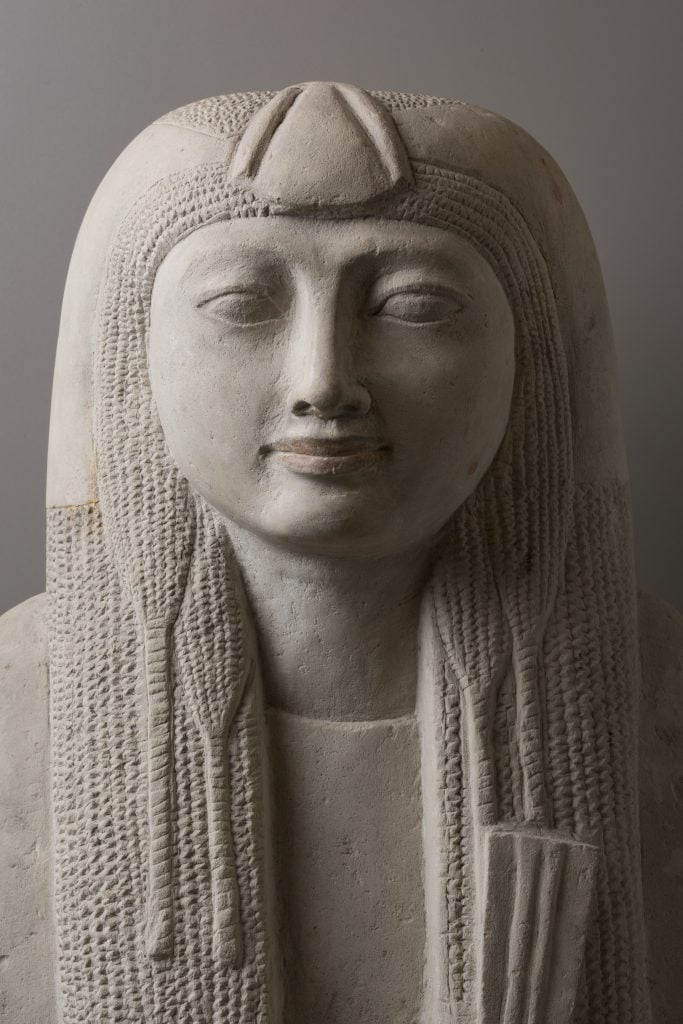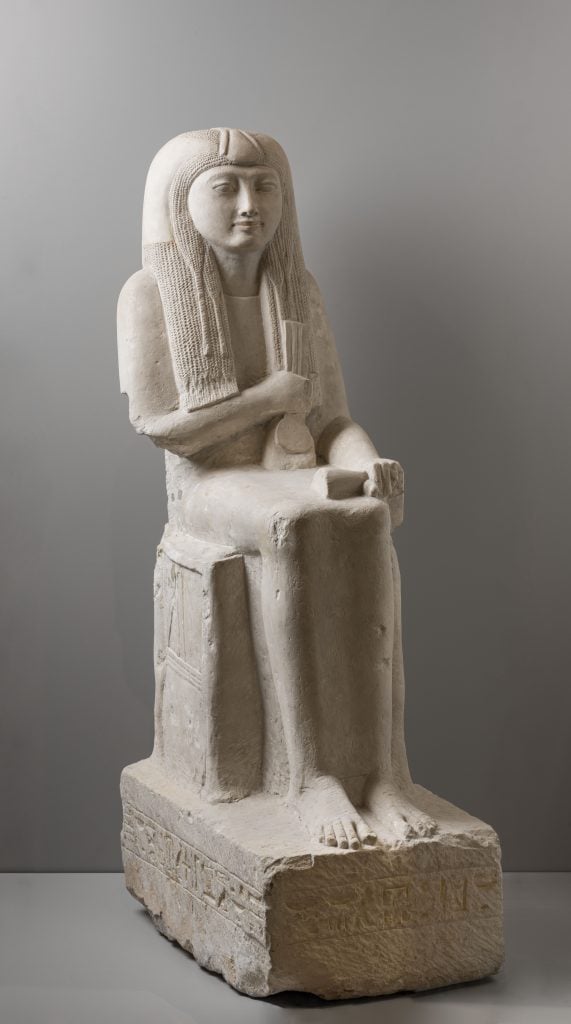Museums & Institutions
The Permanent Collection: An Ancient Egyptian Statue of an Enigmatic Persona
The statue of a woman named Hel is dedicated to the gods of Memphis.

Statue of Hel, ca. 1,300 B.C.E.
Museo Egizio, Turin
Chosen by: Federico Poole, senior curator
This piece has intrigued me from the beginning. It was recorded as coming from the village of Deir el-Medina on the west bank of the Nile at Thebes, southern Egypt, whereas its style tells me it comes from the North, from Saqqara, where the Step Pyramid is. Around 1,500 B.C.E. the elite started building their tombs there. Its inscription with a dedication to the gods of Memphis confirms this.
This was an incredible time for Egyptian art, when artists were not breaking away with tradition, but tweaking it, introducing little touches, little changes to the posture or attitude of the sculptures. One detail that is typical for the period when this statue was made is that women’s dresses start going further down to cover the ankles. Plato admiringly said of Egyptian art that they don’t just let artists do whatever they want, that it has always been the same for 10,000 years. But when you become familiar with it, you realize that it evolved remarkably throughout the pharaonic period (only 3,000 years—Plato was exaggerating).

Statue of Hel, Museo Egizio, Turin Cat. 7352, detail. Photo: Nicola Dell’Aquila and Federico Taverni/Museo Egizio.
The statue holds a menat collar, which would have been used as a musical instrument in worship, to her chest. The beads rest in a featureless lump on the woman’s lap, but originally they would have been painted individually. There’s a statue at the Rijksmuseum van Oudheden in Leiden, Netherlands, that is very similar to ours, but it depicts a woman from the highest echelons of Egyptian society: the wife of the treasurer of Tutankhamun. In this case, the beads of the menat are individually carved. It is also a much larger statue. Both pieces emphasize that these women frequented the temple and worshipped there.
The work [in our collection] is inscribed for a woman named Hel. It is all about who she was as a persona, as a role, rather than an individual. She is an elite woman who participates in the cult of the gods, in this case, the gods of Memphis. This city was an important center in that period, which is why the statue is artistically so sophisticated and innovative. Hel was not meant as a stand-alone piece, but in the context of a tomb, where people might bring food, flowers, or incense for their deceased mother, father, other relative, or friend.
The statue is anonymous, as almost all works of art from ancient Egypt are. Only very rarely are we told the name of these masters, some of whom are as good as any of the great Renaissance artists.
— Museo Egizio senior curator Federico Poole, as told to Emily Steer.
What artwork hangs across from Mona Lisa? What lies downstairs from Van Gogh’s Sunflowers? In “The Permanent Collection,” we journey to museums around the globe, illuminating hidden gems and sharing stories behind artworks that often lie beyond the spotlight.





